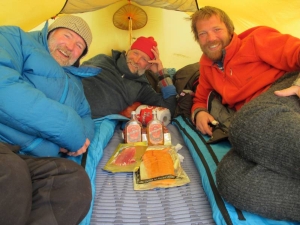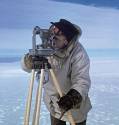A day of restIt is a day of rest on the Plateau. This means the expedition’s official bloggers have the day off, and the task of reporting today’s news falls to the less serious team members.
“The fog finally relented in the course of the night. Lovely, fine morning. Sparkling sunshine and clear. The huge new land lay there bathed in the rays of the morning sun – a wonderful fairy tale in blue and white.”– Amundsen on this day 100 years ago (Read more …) 
First a pertinent piece of advice from the team’s official poet: And now to today’s blog: Many undoubtedly wonder how we handle ourselves when we take a rest day under such extreme conditions. The answer is the pee-bottle. In everyday parlance on the Plateau often called the piss-bottle. On a resting day with wind and drifting snow and and 30°C below, that bottle is more important than ever. The storm can rage on to its heart’s content and one need never leave one’s sleeping bag. Provided one has mastered the technique, that is. But some people do crazy things. The historian Jølle, for example, refuses to sink so low as to pee in a bottle. Regardless of the wind speed outside. The sock magnate Ulvang has to crawl out of his sleeping bag to get it all going. And then much of the point is lost. Seeing Vegard Ulvang hunched on his knees with a red energy drink bottle between his legs at the far end of “the slum” is – with all due respect – not a pretty sight. Besides, he’s wasting all the advantages of being a man. Winther and Aasheim are the only ones who have fully mastered this implementation of the recovery position. So there you have it, a few specifics on issues some of you have undoubtedly wondered about on how we handle a resting day on the Plateau. Position: S 85 39.473, W 169 36.203
Temperature: -29°C Wind: 12 m/s from the southeast Elevation: 2800 metres Distance traversed: 0 km Distance behind Amundsen: 96 km Total distance traversed: 812 km Distance remaining to the South Pole: 499 km Did you know that every direction from the South Pole is north?
The vast and level Antarctic Plateau offers few features to feast the eyes on and none to navigate by. Yet finding one’s way across is really quite simple today, when aided by the satellites of the Global Positioning System (GPS). Finding the South Pole in 1911 was an entirely different story. |
South Pole 1911–2011 is an informational outreach project run by the Norwegian Polar Institute
Contact person:


